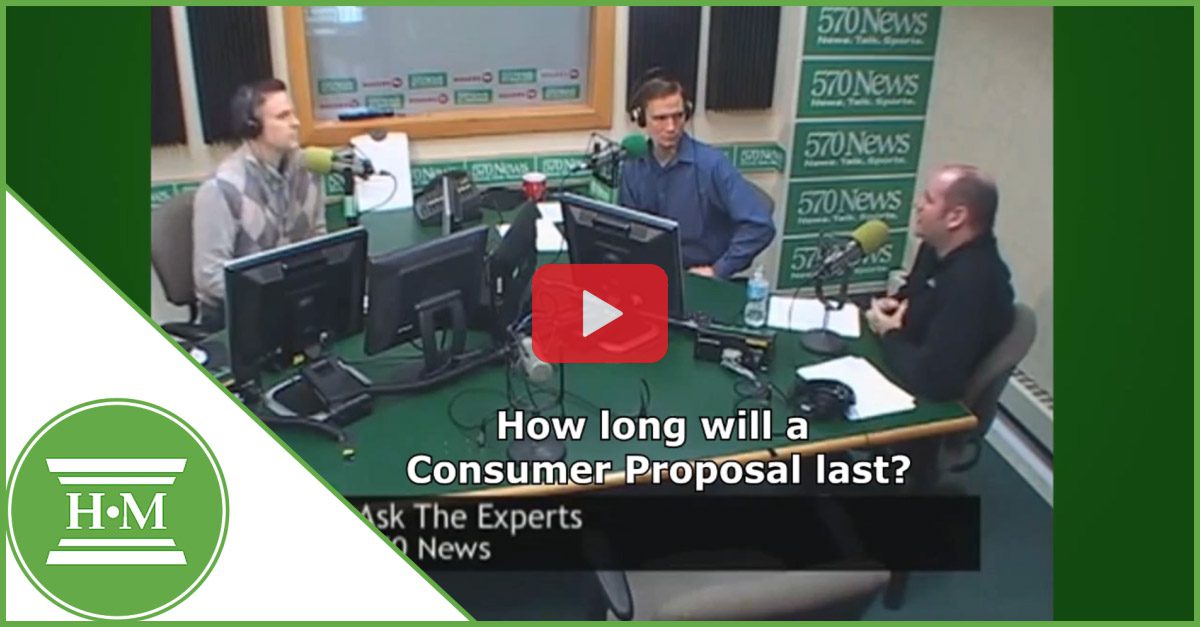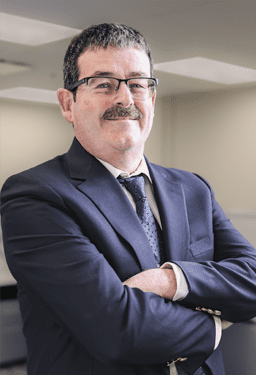
A consumer proposal in Canada is a powerful debt relief option that allows you to settle your debts without declaring bankruptcy. From initial filing to final discharge, a consumer proposal involves several key stages, each with its own duration and importance. Here are some milestones and timelines you’ll encounter during the consumer proposal process.
Table of Contents
How Long Is the Average Consumer Proposal?
By law, a consumer proposal can last no longer than five years or 60 months. However, this timeline can vary based on your specific financial situation and the terms of your proposal. Some proposals may be completed in as little as 12 to 18 months, while others might take the full 5 years.
In our practice, the average consumer proposal length, as originally offered, is 47 months, and the average time to full completion is 42 months. Many people complete their proposals earlier than expected because, without debt payments, their financial situation often improves after filing, allowing them to make extra payments.

Key Milestones in the Consumer Proposal Process
Consultation and Filing
The consumer proposal process begins with an initial consultation with a Licensed Insolvency Trustee (LIT). During this meeting, you’ll discuss your financial situation and be asked to list your unsecured debts, assets, income and living expenses. Your trustee will explain all possible debt relief solutions to determine if a consumer proposal is right for you. If you decide to file, your LIT will help you develop and file a proposal with the Office of the Superintendent of Bankruptcy (OSB) and notify your creditors.
Automatic Stay of Proceedings
Once the proposal is filed, an automatic stay of proceedings takes effect. This immediately stops most unsecured creditor actions, including collection calls, wage garnishments and legal actions.
Creditor Acceptance Period
How long does it take for a consumer proposal to be accepted? Creditors have 45 days to accept or reject your proposal.
One potential delay can occur if a meeting of creditors is called. This happens if creditors holding 25% or more of your debt request a meeting, which can extend the acceptance period by up to 15 days.
If the majority of your creditors (based on dollar value) accept the proposal, it becomes binding on all unsecured creditors.
Implementation and Payment (Up to 5 years)
What happens after the 45-day period?
Once accepted, you will begin making payments to your trustee according to the agreed terms. You will also be required to attend two credit counselling sessions. This phase can last up to five years.
If the proposal is rejected, you’ll need to discuss alternative options with your Licensed Insolvency Trustee, including filing a revised proposal or considering other debt relief methods.
Missing payments can jeopardize your proposal, potentially leading to its annulment. If this happens, you lose the protection of the proposal, and creditors can resume collection activities. To avoid this, it’s essential to prioritize your proposal payments and communicate with your trustee if you encounter financial difficulties.
Completion and Discharge
The final stage is completion and discharge. After you’ve fulfilled all the terms of your proposal – by making all required payments and attending two financial counselling sessions – you’ll receive a Certificate of Full Performance. This document, issued by your Licensed Insolvency Trustee, officially releases you from the debts included in your proposal. You are now debt free.
Considering a consumer proposal?
Other Common Questions
What’s the best payment term to offer?
Opting for a 60-month payment plan in your consumer proposal is often the best strategy. Here’s why:
-
It results in the lowest possible monthly payments.
-
Creditors might extend shorter proposals to 60 months anyway, expecting that you can afford the same monthly payment.
-
You’re not locked in. Consumer proposals are “open” by law, allowing you to make extra payments thereby paying off your proposal early if your finances improve.
However, if you expect a lump sum soon (like a bonus or proceeds from selling an asset), you might consider a shorter term or partial lump sum offer. Keep in mind, creditors will still expect a similar total realization regardless of the proposal’s structure.
Can I customize my payment schedule?
At Hoyes Michalos, we understand that aligning your consumer proposal payments with your income is better for your budget. While most consumer proposals are structured with monthly payments, we offer flexible payment options to match your pay schedule.
We can customize your payment frequency to be weekly, bi-weekly, semi-monthly, or monthly – whatever best suits your financial situation. This synchronization makes budgeting more manageable and reduces the stress of remembering payment due dates. To further simplify the process, we offer pre-authorized payments.
There’s an additional advantage for those paid bi-weekly: in months with three pay periods, you can get ahead by one proposal payment. This extra payment provides a cushion if you face a tight month during your proposal term or can help you pay off your proposal earlier than expected.
By tailoring your payment schedule to your income pattern and utilizing pre-authorized payments, we aim to make your journey through the consumer proposal process as smooth and stress-free as possible. Our goal at Hoyes Michalos is to set you up for success in regaining your financial stability.
How long will a consumer proposal affect my credit report?
The Office of the Superintendent of Bankruptcy (OSB) in Canada regularly reports all bankruptcies and consumer proposals to the major credit bureaus (Equifax and TransUnion). This note will include the type of proceeding and date of filing. Upon completion, the OSB will update your report with your discharge date.
A consumer proposal remains on your credit report for 3 years after you’ve completed all the terms of your proposal or 6 years from the date you filed, whichever comes first. This is significantly shorter than the impact of bankruptcy, which can stay on your credit report for up to 7 years.
You can apply for a secured credit card while in a consumer proposal, allowing you to begin rebuilding your credit score soon after filing.
Life After a Consumer Proposal: Moving Forward
Once you’ve completed your consumer proposal, you should focus on rebuilding your credit and maintaining sound financial habits.
-
Review your credit report for accuracy
-
Consider a secured credit card to rebuild your credit
-
Use credit wisely and sparingly
-
Build an emergency fund
-
Develop and stick to a budget
-
Set clear financial goals
Get Help Filing a Consumer Proposal
Ready to take control of your debt? Contact Hoyes Michalos today for personalized advice from our experienced Licensed Insolvency Trustees. We’ll guide you through every step of the consumer proposal process and help you make the best decision for your financial future.
Don’t let debt overwhelm you any longer – take the first step towards financial freedom now!





